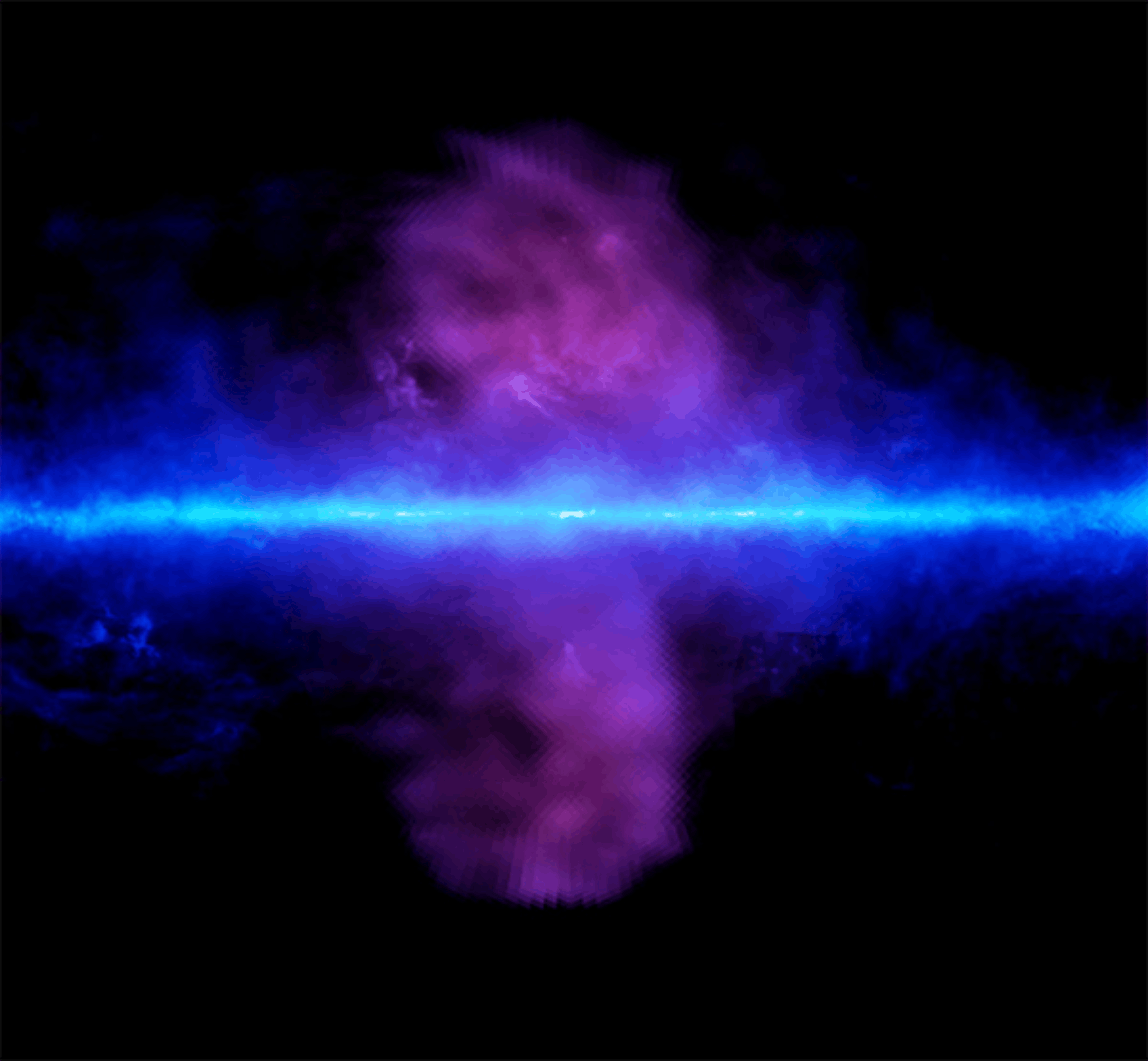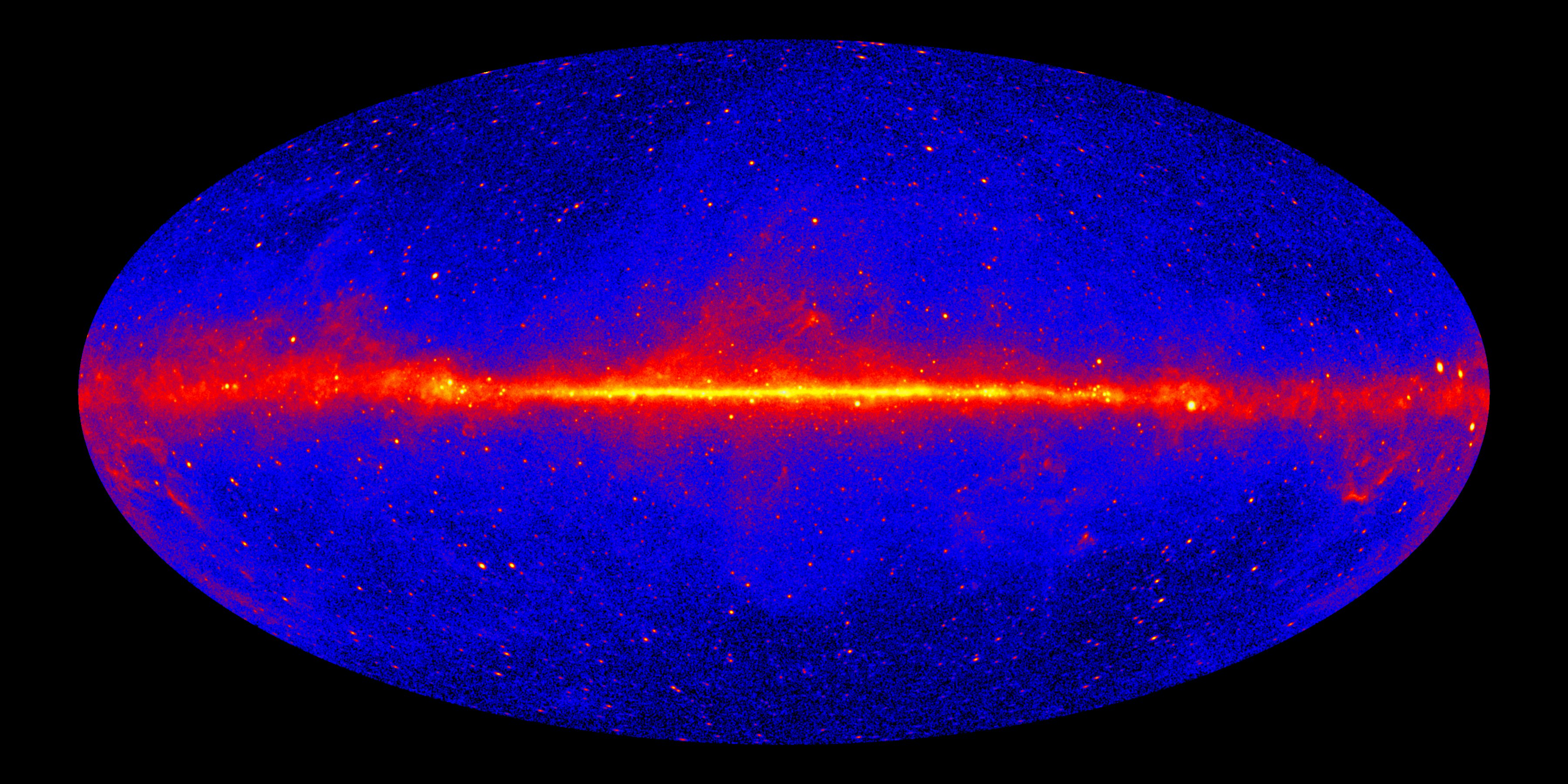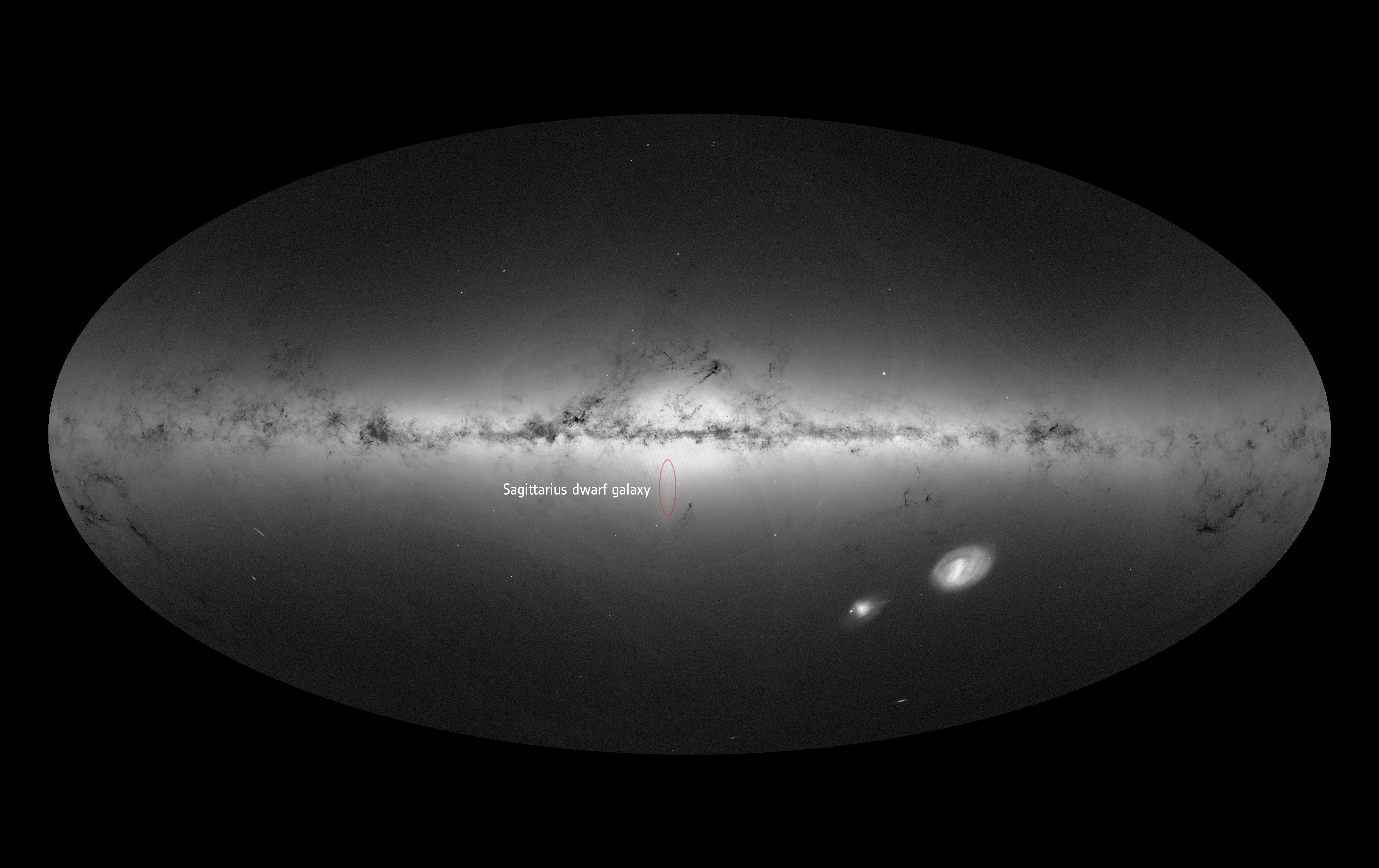
For high-energy astrophysicists like Roland Crocker, the center of the galaxy is also the center of the action.
Sagittarius A*, the supermassive black hole that makes our galaxy possible, is an engine of high-energy radiation known as gamma rays. Thankfully, Earth’s atmosphere blocks us from this life-exterminating radiation, but the Fermi Gamma Ray Telescope, launched in 2008, has illuminated the “gamma-ray sky” in unprecedented detail.
These rays play a vital role in astronomy’s quest to explain the origins of the universe — and possibly play an even bigger role in answering one of astronomy’s greatest conundrums.
“There’s been this long-standing hope that the gamma-ray sky can tell us things about the nature of dark matter,” Crocker, an astrophysicist at Australian National University in Canberra, Australia, tells Inverse. “In a region where there’s a large density of dark matter, for instance, toward the center of our own galaxy, annihilations [of dark matter] could produce gamma rays.”
One of Crocker’s biggest areas of interest is the Fermi bubbles, two gamma ray-emitting, bubble-like structures each stretching 25,000 light years north and south (as arbitrary as that may sound when you’re talking about outer space) from the center of the galactic plane.
Discovered in 2010, these faint-yet-highly energetic outflows of gas are so large that they take up one-tenth of the total sky, Crocker says. Although uncertain of the bubbles’ origins, scientists have observed a “cocoon” substructure in the southern Fermi bubble producing gamma rays — could this be evidence of a weakly interacting massive particle, otherwise known as dark matter?
Well, not so fast.
Crocker’s paper, published Monday in the journal Nature Astronomy, argues that this “substructure” doesn’t belong to the Fermi bubble at all but instead a satellite galaxy behind the bubble (from our galactic perspective) called the Dwarf Sagittarius Spheroidal Galaxy, or Sagittarius dSph.
Although possibly a blow for understanding dark matter and the origins of these bubbles, the paper explains the surprising importance of another gamma ray-emitting astronomical phenomena — millisecond pulsars.

What’s new — The Milky Way isn’t alone in our region of space. We have a series of close companions orbiting our galaxy. The two largest dwarf galaxies inside are the Large and Small Magellanic clouds, but in third place is Sagittarius dSph. This dwarf galaxy was only discovered in 1994 because of its close proximity to the galactic center and is currently in the extremely long process being subsumed into the Milky Way.
Years ago, when looking at a another paper examining data from the the European Space Agency’s billion-star surveyor named Gaia, Crocker noticed a subset of stars identified beyond the Galactic Bulge (a tightly packed group of old stars at the galaxy’s center) belonging to Sagittarius dSph, some 65,000 light years from Earth. The star’s alignment with the proposed “cocoon” within the southern Fermi bubble was uncanny.
“I did the dumbest thing and overlaid the two images in Powerpoint,” Crocker says, “and they seem to sit on top of each other.”
Being a theorist and not a data analyst, Crocker teamed up with Oscar Macias, an astrophysicist at the University of Amsterdam, to look at the data and determine if his hunch that the Fermi “cocoon” was actually a case of galactic misidentification was correct. After running some analyses, the answer became clear.
“The gamma rays that are in this cocoon structure are tracing the detailed distribution of the stars in the Sagittarius dwarf,” Crocker says. “So the fact that we see this brightening in the southern Fermi bubble is just a coincidence.”
Crocker isn’t completely ruling out that there isn’t some kind of substructure in the bubble, but that a large portion of the current “evidence” actually originates from this sneaky dwarf galaxy.

Here’s the background — As if often the case in science, the solution of one mystery only created another. Most gamma rays are created from the interaction between cosmic rays and the gasses in the interstellar medium — the higher accumulation of gas, the more gamma rays you get. But because Sagittarius dSph is in the process of spaghettification (or stretching out) by the Milky Way, the galaxy has lost the gas that makes gamma rays possible. It’s also made up of old stars, which means there are no cosmic ray-emitting supernovae in the dwarf galaxy either.
So, where are these gamma rays in the dwarf galaxy coming from?
“That basically left us with two scenarios,” Crocker says. “One was … that those gamma rays are a signature of dark matter annihilation … the other scenario is that these gamma rays come from these things called millisecond pulsars.”
Millisecond pulsars are neutron stars, or the collapsed core of a star, that spin several hundred times per second (hence the name). This incredibly fast spin weakens its magnetic fields and very gradually releases high-energy particles resulting in gamma rays. Because these gamma rays trace closely with the stars of the Sagittarius dSph, millisecond pulsars quickly seemed like the most likely gamma ray-emitting candidate.
“Something we can infer from this work is that millisecond pulsars may be more important than we realized in supplying gamma rays in the Milky Way itself,” Crocker says.

Why it matters — This discovery could help illuminate other gamma ray mysteries at our galaxy’s center. For example, unexplained gamma ray emissions from the Galactic Bulge, known as Galactic Center GeV Excess, have been considered a possible source of dark matter annihilation, but Crocker theorizes these gamma rays could also be millisecond pulsars emanating from this old star population.
Dwarf spheroidal galaxies are a compelling test bed for finding dark matter because their lack of interstellar gas and cosmic rays created “clean systems” for astronomers to search for dark matter annihilations. “Our result … shows that even in these old populations of stars, you can still get gamma ray-emitting objects,” Crocker says. “That just makes the search for dark matter that much more difficult.”
What’s next — Difficult, but not impossible.
In 2025, high-energy astrophyscists will get a new toy for exploring the gamma ray sky — the Cherenkov Telescope Array (CTA). This array, with two telescope locations in Chile and the Canary Islands, will be the first ground-based gamma ray detector ever built. Where the Fermi Gamma-Ray Space Telescope is a 9-foot-squared cube, the CTA will be more than 100 telescopes between 13 to 75 feet in diameter.
“CTA will do many things, but it’ll almost certainly make observations of these dwarf spheroidal galaxies,” Crocker says. “It’ll produce very good representative observations.”
The array is scheduled to go online in 2025 and one its main objectives is detecting gamma rays and unraveling the mysteries of dark matter — wherever they might be hiding.







